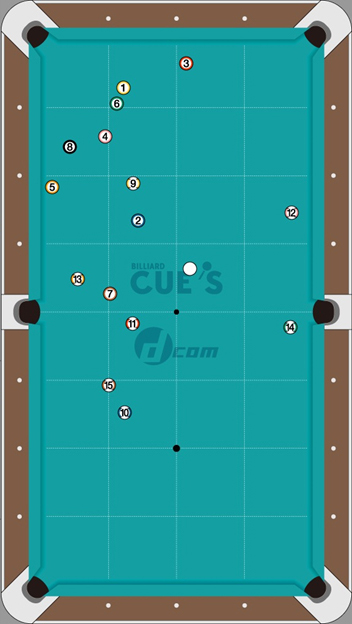Here I am peddling a bike around Vienna taking in all the sights. Before starting this tour, I read the guidebooks, studied the map, packed a lunch and checked the weather. I did a lot of pre-planning before I stepped out the door. Last night I got to watch Corey Deuel play a match in the Mosconi Cup from about ten years ago. What is amazing is how much planning Corey did before he took the first shot in each turn at the table. He walked around the table, studying the lay out. He checked out various options to see which pattern was the easiest.
Watching intermediate players play, it always amazes me how quickly they shoot the first shot. I know it seems like it takes forever for me to decide which way to go. I look at different options, different shots, trouble areas, and stop ball patterns. I wonder how they can see all those options in a fraction of the time it takes me. My guess is they don't!
Along these lines, what I would like you to do in your next practice session is pick at least two starter shots, then decide which one is the best. This is an old habit of straight pool and one pocket players. Have at least two options to start with! Then you can pick the best one.

Let's take a look at a sample rack of eight ball to see how this plays out in real time. In the diagram above, we have a random break of 8 ball. Take a look and see what you would start with. Now a lot of you might have picked the 7 as the first shot. This develops the 7, 5, 2 triangle. You really have to get perfect on the 2 to fall on the 4, 6, and 1. You also have to make sure you keep a good angle so you don't hit any balls.
How many of you saw this pattern: 10, 15, roll forward for the 11, come back a bit for the 14, stop on the 12, 13 down the line to the 9, and then the 8!
This is a much easier pattern and it starts with a slightly more difficult shot. However, once you get started, the cue ball pretty much stays in one place and doesn't need to move a whole lot.
What I'm asking you to do is look beyond the first shot and develop another option. Then you can pick the better of the two.
I guarantee you that if you develop this habit, you will run out more, get in position to play better safes, and solve more problems on the table then you are doing now.
So to repeat, the next time it is your turn at the table, pick at least two different starter shots. Then you can decide which one works the best for your stroke and the current game situation.